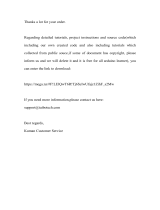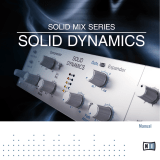
2
PreSonus AudioBox
™
22/44VSL
Overview Hookup Connecting
to a
Computer
Software: Virtual StudioLive
SL Remote,
and Studio One Artist
Tutorials Technical
Information
Troubleshooting
and Warranty
Overview
1 Overview
1.2 Summary of AudioBox 22VSL Hardware Features
1.2 Summary of AudioBox 22/44VSL Hardware Features
• 24-bit/96 kHz sampling rate
• 2 /4 Class A XMAX microphone preampliers
• 2 Instrument inputs
• 2 Balanced Line inputs (AudioBox 44VSL Only)
• MIDI I/O
• High-denition analog-to-digital converters (108 dB dynamic range)
• 2x2/4x4 USB 2.0 audio interface
• Headphone output
• Analog monitor mixing with playback/input mix control
• Rugged steel chassis
• Studio One™ Artist
• Compatible with Cubase, Digital Performer, Logic, Nuendo,
Pro Tools 9+, Sonar, Studio One, and others
• Mac OS X®- and Windows®-compatible
1.3 Summary of Studio One Artist Software Features
All PreSonus audio interfaces include PreSonus Studio One Artist recording
software, which comes with over 4 GB of plug-ins, loops, and samples, giving
you everything you need for music recording and production. The Studio
One Artist Quick Start Guide is located in Section 4.1 of this manual. You will
nd a complete user manual on the Studio One Artist installation DVD.
• Unlimited track count, inserts, and sends
• 20 high-quality native plug-ins: amp modeling (Ampire), delay (Analog Delay,
Beat Delay), distortion (Redlight Dist), dynamics processing (Channel Strip,
Compressor, Gate, Expander, Limiter, Tricomp), equalizer (Channel Strip, Pro EQ),
modulation (Autolter, Chorus, Flange, Phaser, X-Trem), reverb (MixVerb, Room
Reverb), and utility (Binaural Pan, Mixtool, Phase Meter, Spectrum Meter, Tuner)
• Over 4 GB of loops, samples, and instruments, featuring: Presence
virtual sample player, Impact virtual drum machine, SampleOne virtual
sampler, Mojito virtual analog-modeled subtractive synthesizer
• Innovative and intuitive MIDI mapping
• Powerful drag-and-drop functionality for faster workow
• Mac OS X®- and Windows®-compatible






















